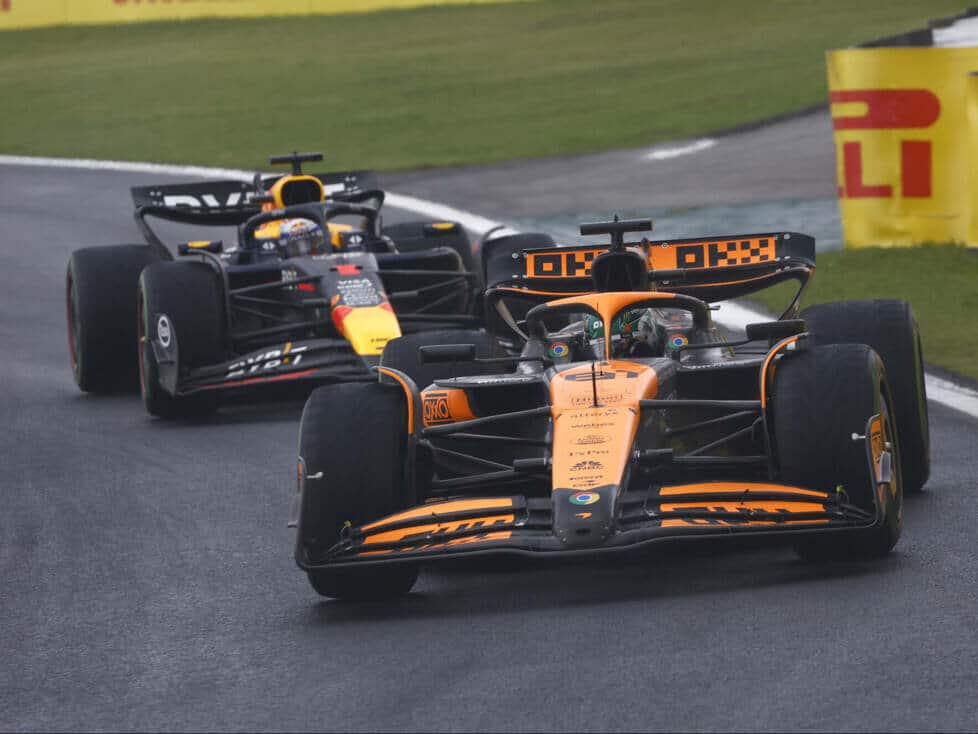On January 1, the new aerodynamic development values will come into force: Red Bull and Racing Bull’s only winners, McLaren and Alpine will lose out.
Will Red Bull’s poor performance in the second half of the 2024 season benefit them in 2026? That’s because the team is one of only two Formula 1 teams that will get more testing time when the handicap system is updated before the new 2025 Formula 1 season – the other is sister team Racing Bulls.
This is because Red Bull has fallen two places in the constructors’ championship since the summer, which serves as a basis. When the values were last updated on July 1, the Bulls were still in first place and thus had the fewest wind tunnel hours and CFD runs available.
This burden will now pass to their rival McLaren on January 1, who secured the Constructors’ Championship in Abu Dhabi. Basically, McLaren and Red Bull are swapping values, as McLaren was only in third place going into the second half of the year – Ferrari was in second place in both cases and has an unchanged allocation.
In concrete terms, this means that Red Bull gets ten percent more development time and McLaren ten percent less. McLaren is now only at 70 percent, Red Bull at 80 percent – the reference of 100 percent is set at the seventh-placed team (in this case Haas).
Haas is allowed to carry out 320 wind tunnel tests during a test period, of which six are scheduled per year, with 400 hours of occupancy time and a so-called wind-on time of 80 hours; all other teams have more or less, depending on their percentage. The same applies to the use of CFD.
Horner: “The only advantage”
McLaren will now only have 224 wind tunnel tests (previously 256) with a time of 280 hours (previously 320) and a wind-on time of 56 hours (previously 64). At Red Bull, the values are exactly the opposite.
Red Bull team principal Christian Horner is happy to take the advantage, even though he would have preferred to win the title: “We hate coming third in the championship,” he admits. “But the additional wind tunnel time that comes with it is, if you will, the only advantage in a year when such a dramatic rule change is on the horizon.”
Because in view of the new regulations from 2026, every minute of development time and every run in the wind tunnel can be important.
For Mercedes (85 percent), as for Ferrari (75 percent), nothing will change in the new year, and Aston Martin will also retain its 90 percent development time from 2024.
Alpine loses in the rear field
But there is another change in the rear field, and it is similar to the fight at the front, because there, too, two competitors are swapping places, while the positions of all the other teams have remained the same.
Because Alpine’s upturn is costing the French team dearly in terms of development. The team only went into the second half of the year in eighth place and therefore had the third-largest development time of 105 percent, after Sauber and Williams.
But because they were still able to move up to sixth place in the last races of the season, it is now ten percent less. On the other hand, the Racing Bulls have this extra ten percent available to them because they slipped from sixth to eighth place. The Haas team remains in between in seventh place.
There are no changes for Williams (110 percent) and Sauber (115 percent), which continue to be allowed to develop the most.
The allocation will not change again until the next cut-off date of June 30, 2025. Then the current World Cup standings will again be used as a basis.





